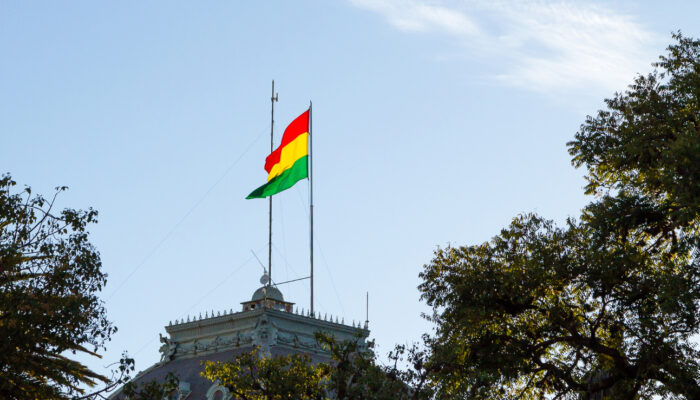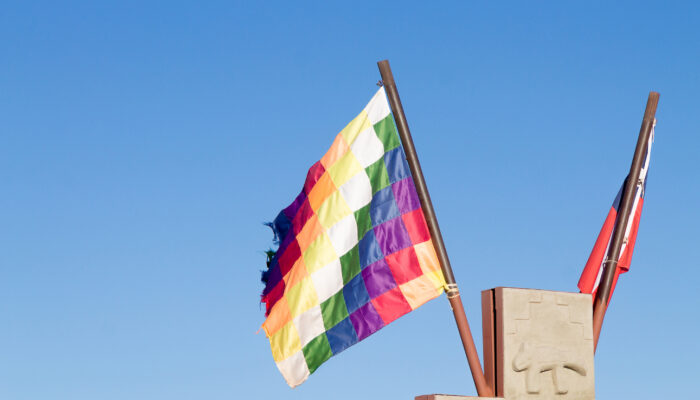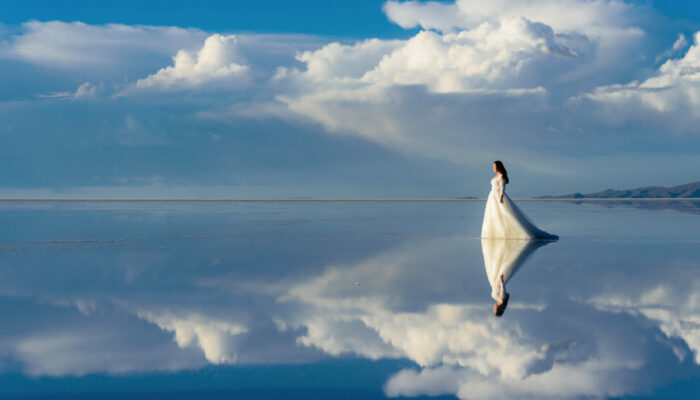In honour of the country’s bank holidays on 6 August, Thaki Voyage has decided to talk to you in September about the Bolivian flag, or rather… Bolivian flags! These colourful national symbols will enable us to find out more about the country, its history and its identity.
Together, let’s take a closer look at these official representations, but also at their colours, as it’s no coincidence that they were chosen to represent the territory. So what are their hidden meanings?
This month, Thaki Voyage brings you the colours of red, yellow and green for a colourful back-to-school season!
A recognisable flag: the sacred meaning of colours
The Bolivian flag has evolved considerably over the centuries to end up as we know it today.
The flag was adopted in 1888, but the colours we know today were chosen on 30 November 1851. The flag is made up of three horizontal stripes, the colours of which are red, yellow and green, all expressed in equal proportions.
To understand Bolivia through its flag, we need to analyse the choice of these three colours. Red represents the bravery of Bolivian heroes and the blood shed by their soldiers to free Bolivia from Spanish domination. Yellow expresses the country’s mineral wealth. Green symbolises the fertility of Bolivian soil, rich in forests and home to the Amazon basin. This colour is also a sign of hope for the indigenous people.
The role of a flag is very important within a society, since it allows citizens to identify with their country, but also because it represents the historical development of its territory. This is absolutely the case with the Bolivian flag, which embodies the whole of its past history, in particular independence and the riches of its land. It’s worth noting that the country owes its name to Simon Bolivar, its liberator.
A second flag similar to the first?
You may already have seen a second flag, identical to the one just described but with the coat of arms in the centre of the yellow colour. In fact, Bolivia has two flags, one civil, i.e. without a coat of arms, and the other, known as the state flag, to which the country’s coat of arms has been added.
The coat of arms is made up of a number of elements that highlight Bolivia’s identity, including an Andean condor, the country’s national bird, a laurel tree representing Bolivia’s victory over the Spanish during the War of Independence, and the capital lettering BOLIVIA.
In addition, there is an oval shield to commemorate the loss of the coastline during the War of the Pacific against Chile, which lasted from 1879 to 1893, and 10 yellow 5-pointed stars corresponding to the 10 departments that make up Bolivia.
In the centre of the coat of arms, you can see Cerro Rico, the majestic mountain of Potosí, and the silver mine: these elements and the colour yellow represent Bolivia’s mineral wealth. You’ll also find a chapel, a symbol of the Catholic religion that arrived following the conquest of the country by the colonisers, and a red sun representing the birth of the Bolivian Republic.
The llama, wheat and palm tree are symbols of the fauna, agriculture and vegetation of the land. With the green colour of the flag, we can also make the link with nature and therefore the Pachamama, which has an essential place in the hearts of Bolivians. See our August article for more on this subject!
As for the red hat, it expresses freedom. The axe is used to show power, as are the rifles, which are a pictorial representation of the Bolivian army.
There are also 6 small Bolivian flags to remind us of the nation’s independence, but also of the many losses of territory to its neighbours.
During your stay in Bolivia with Thaki Voyage, you’ll have the chance to discover all the elements that characterise the country.
A few words about the flag of the indigenous Andean peoples: the Wiphala
If you’re not already familiar with the Wiphala, you should know that this flag is considered to be the emblem of the Andean peoples and is therefore highly visible in the Andean regions of South America.
In Bolivia, it represents the Aymara group, and was the second flag adopted by the country in 2009. This multicoloured flag has a square checkerboard pattern of rainbow colours: red, orange, yellow, white, blue and violet, with each colour having its own significance.
Red is a testimony to the earth and the fertility of the soil. Fertility and community culture are represented by the colour orange. Yellow is a symbol of essential values for the Andean people, who attach great importance to the unity of body and soul. It evokes notions of solidarity, strength and brotherhood. White, as in many civilisations, represents peace, harmony and wisdom. Green represents economic growth and production. As for blue, it symbolises freedom and natural laws. Let’s finish our explanation with violet, which shows the place of politics and communal power in Andean communities.
Bolivia is a nation of colours, and a few steps through the country’s streets will be enough to let you soak up its colourful atmosphere, with its architecture, frescoes, festivals, fabrics of all kinds and flags!
Thaki Voyage hopes that the history of the Bolivian flag, its colours and its symbols will bring you closer to this land that we love so much! Call us as soon as possible to prepare for your Andean adventures, we look forward to seeing you!
Mathilde Leroux







